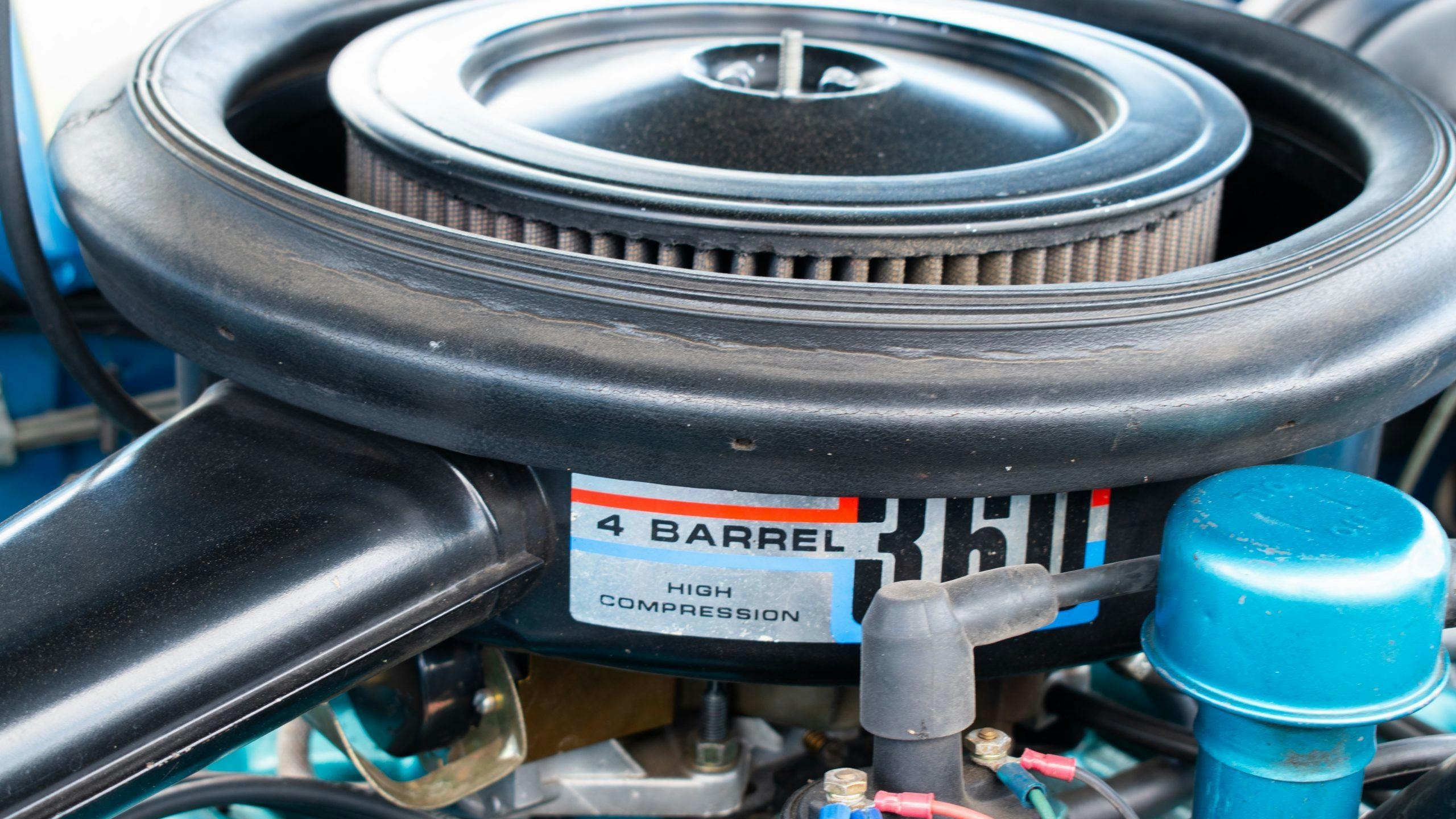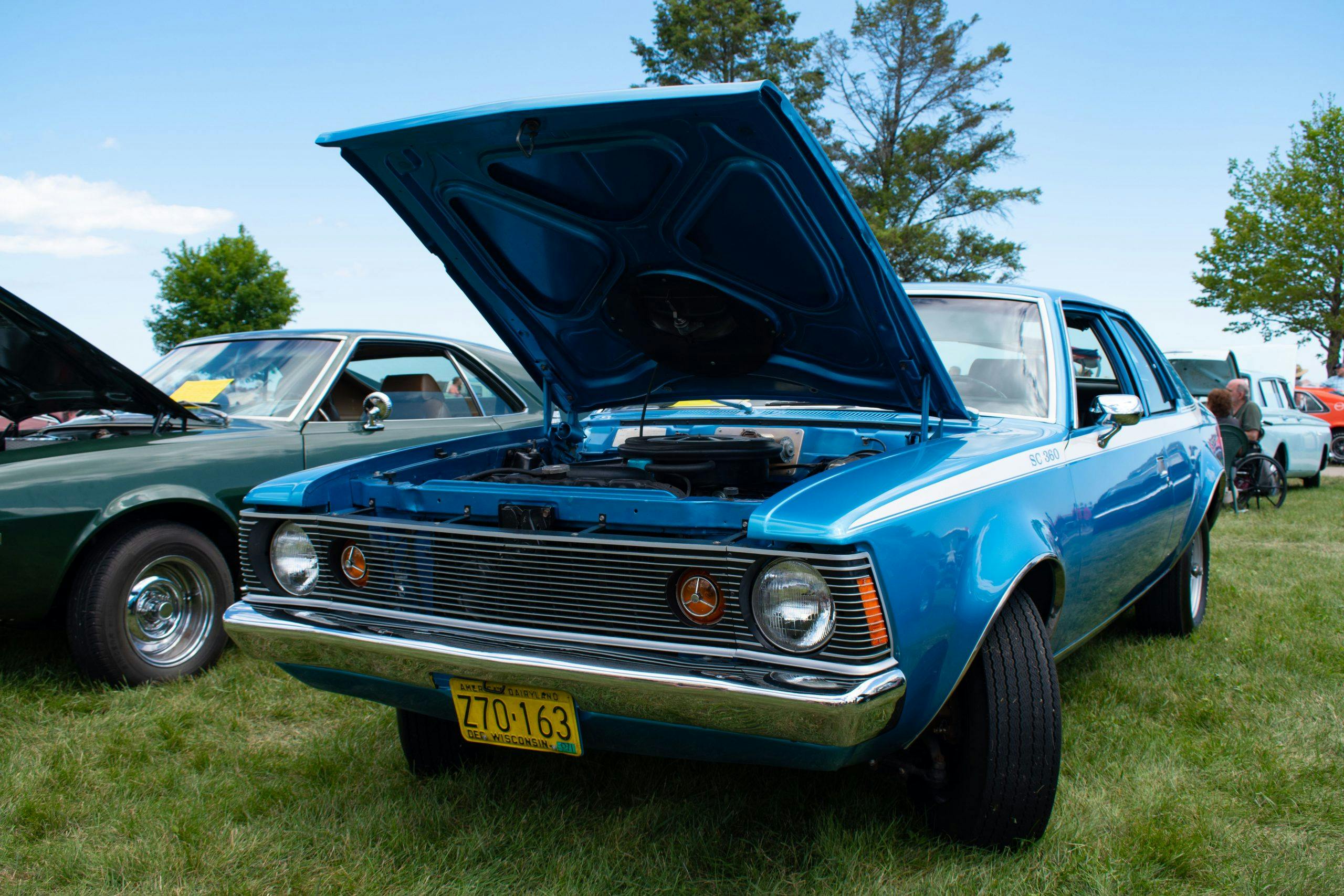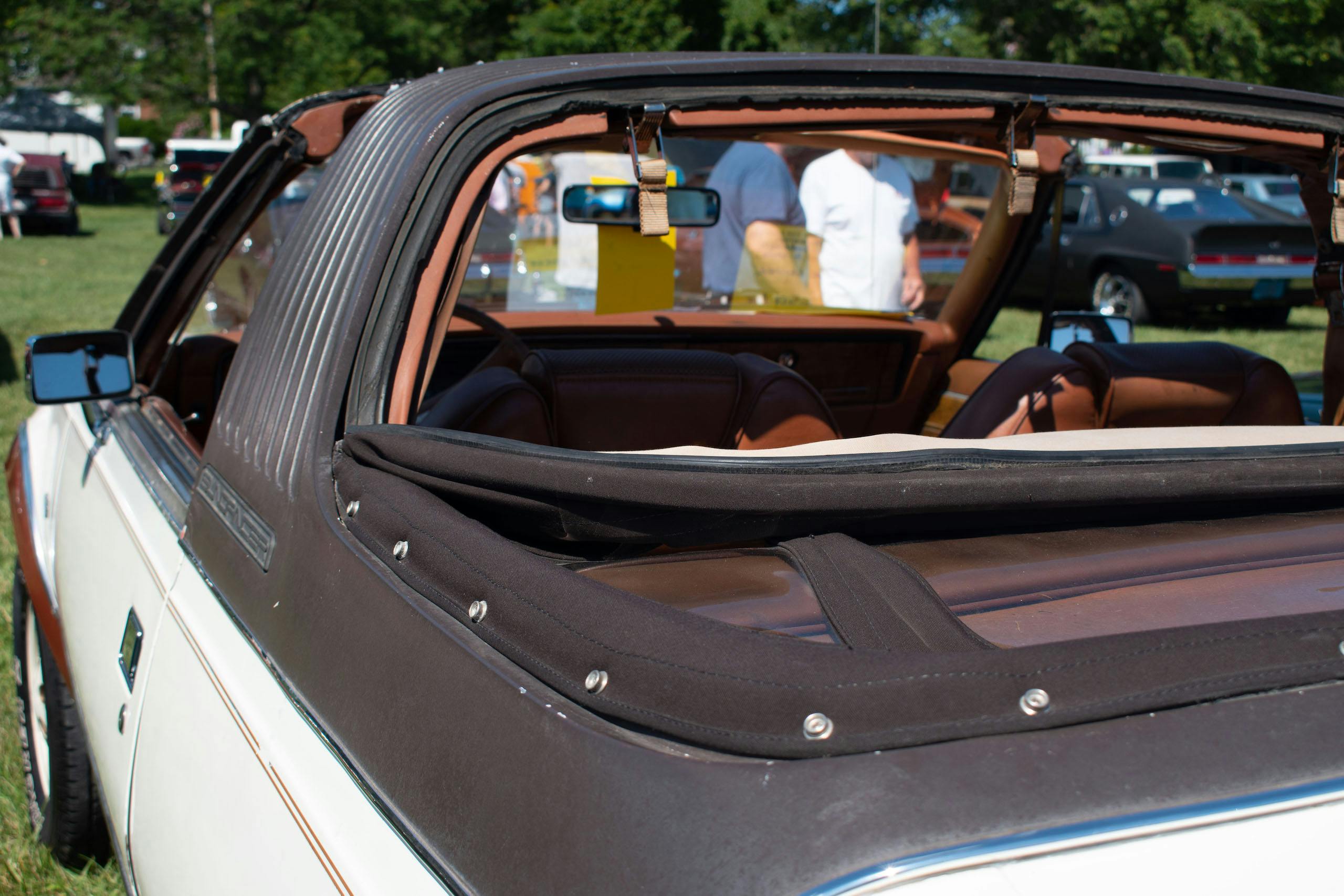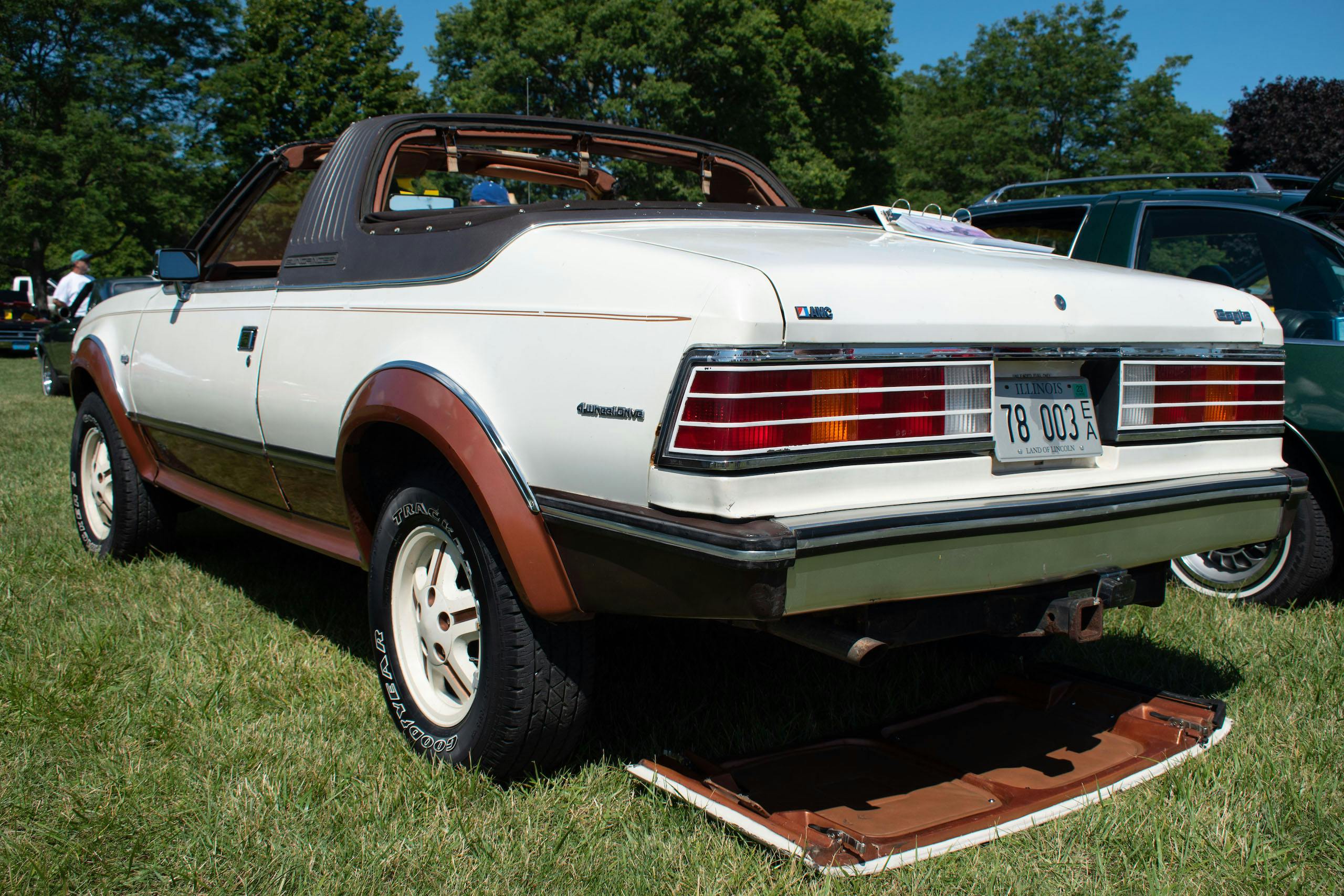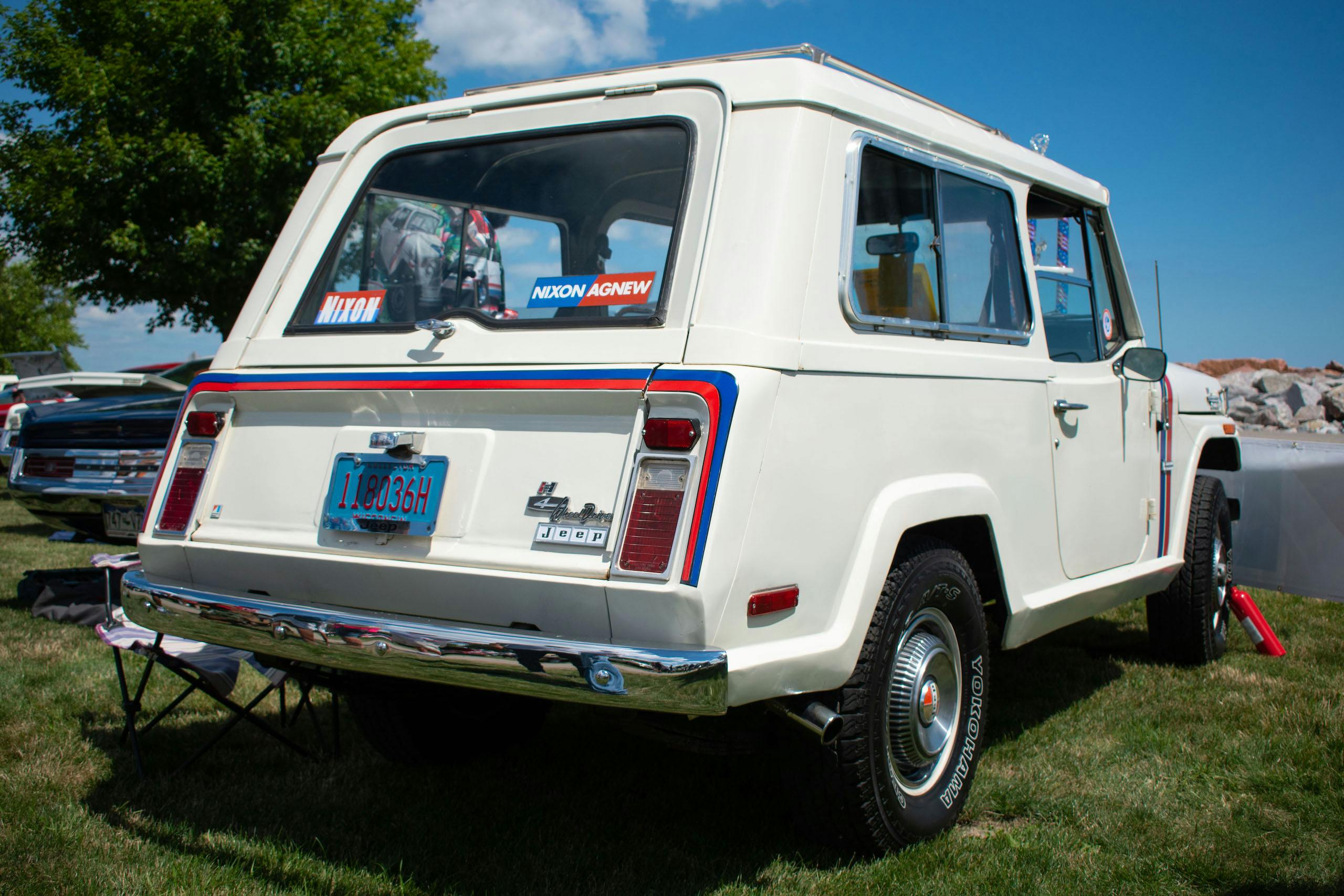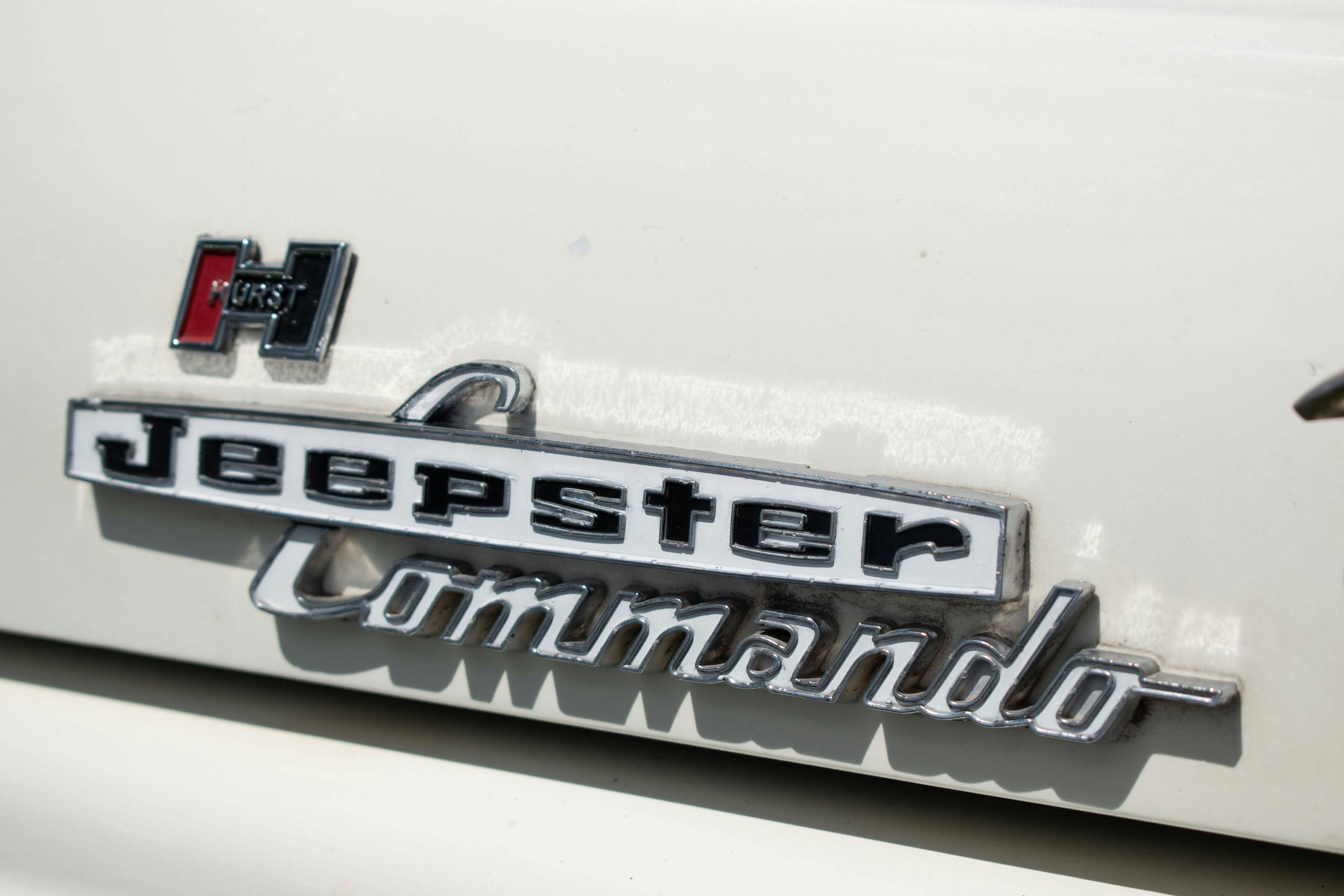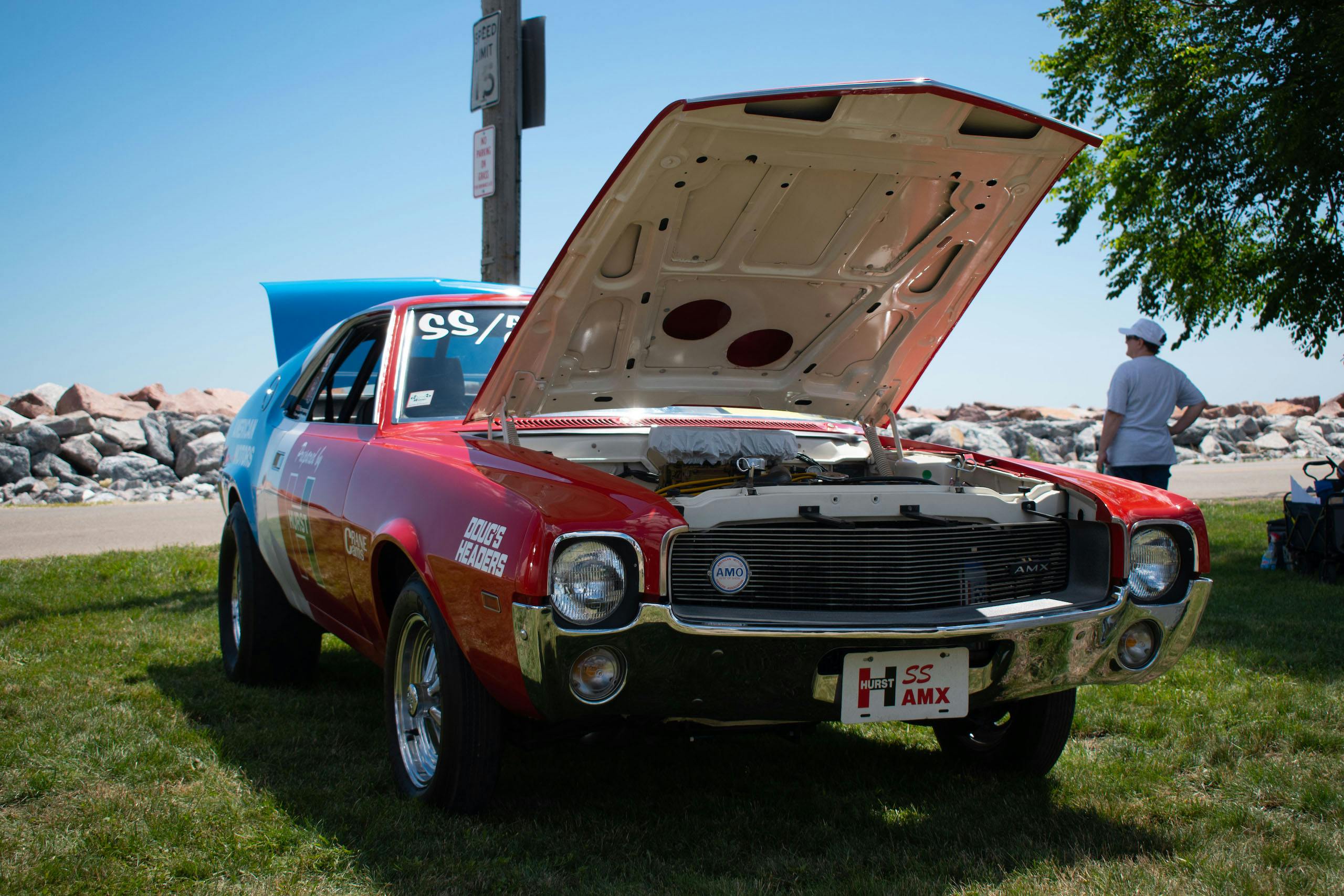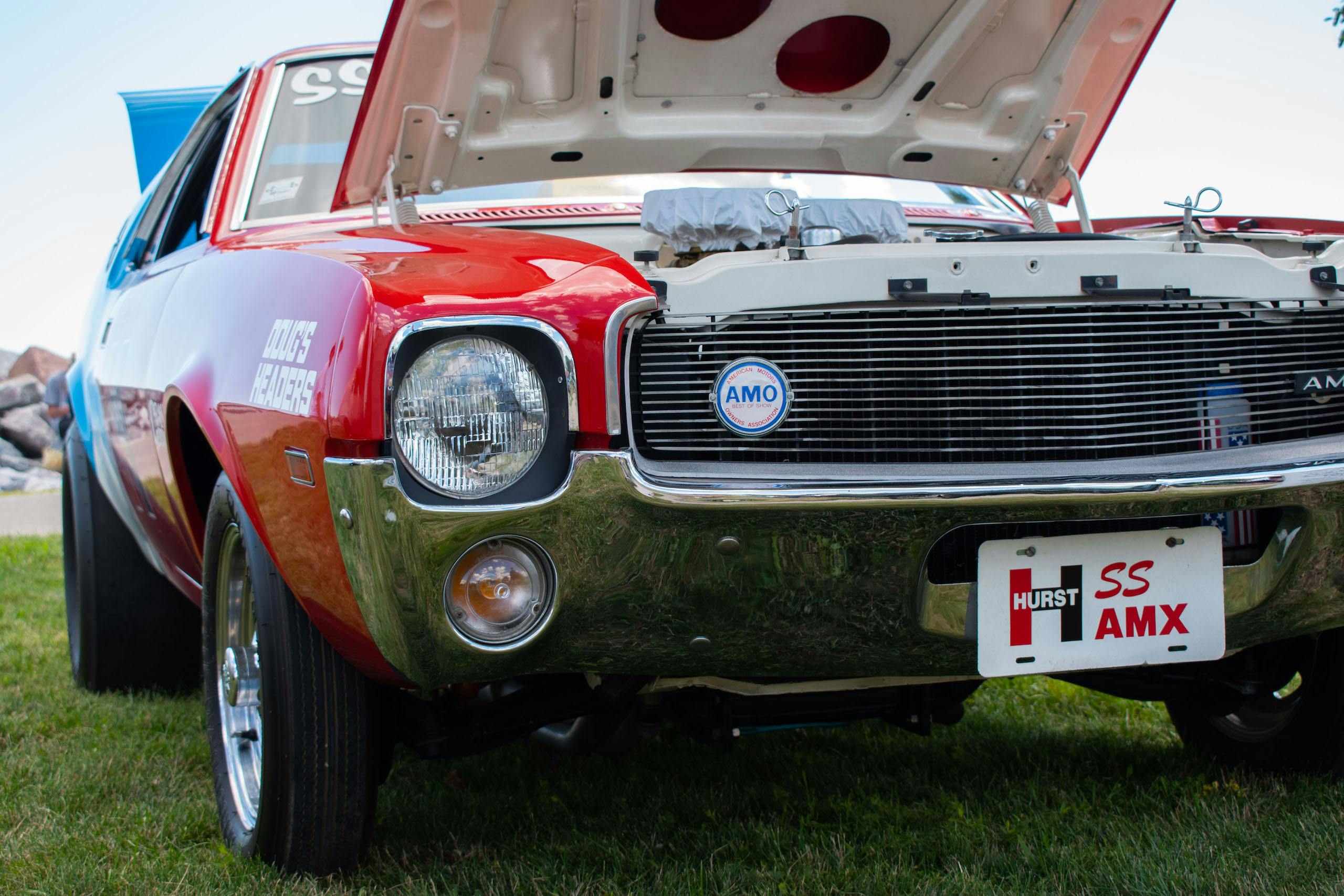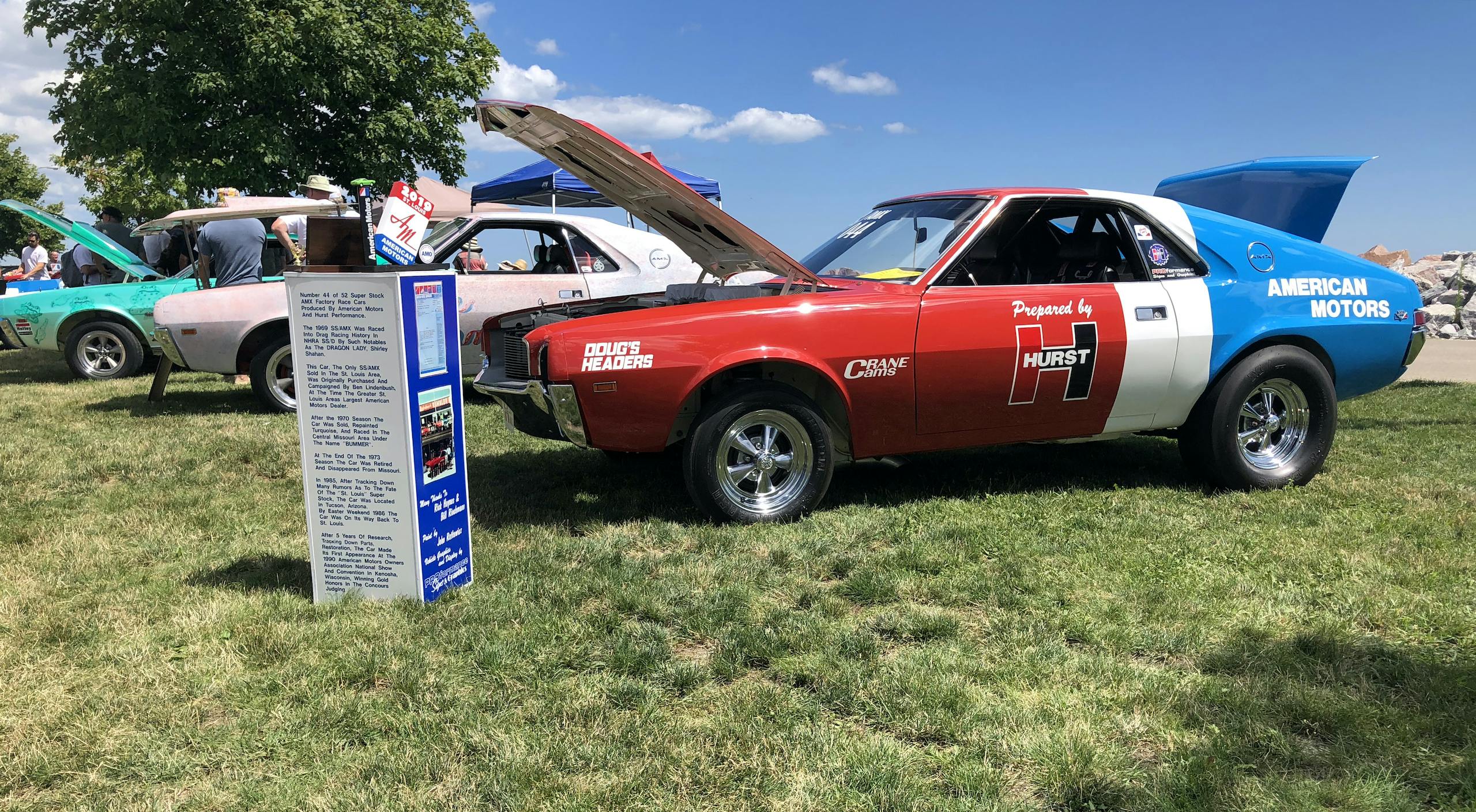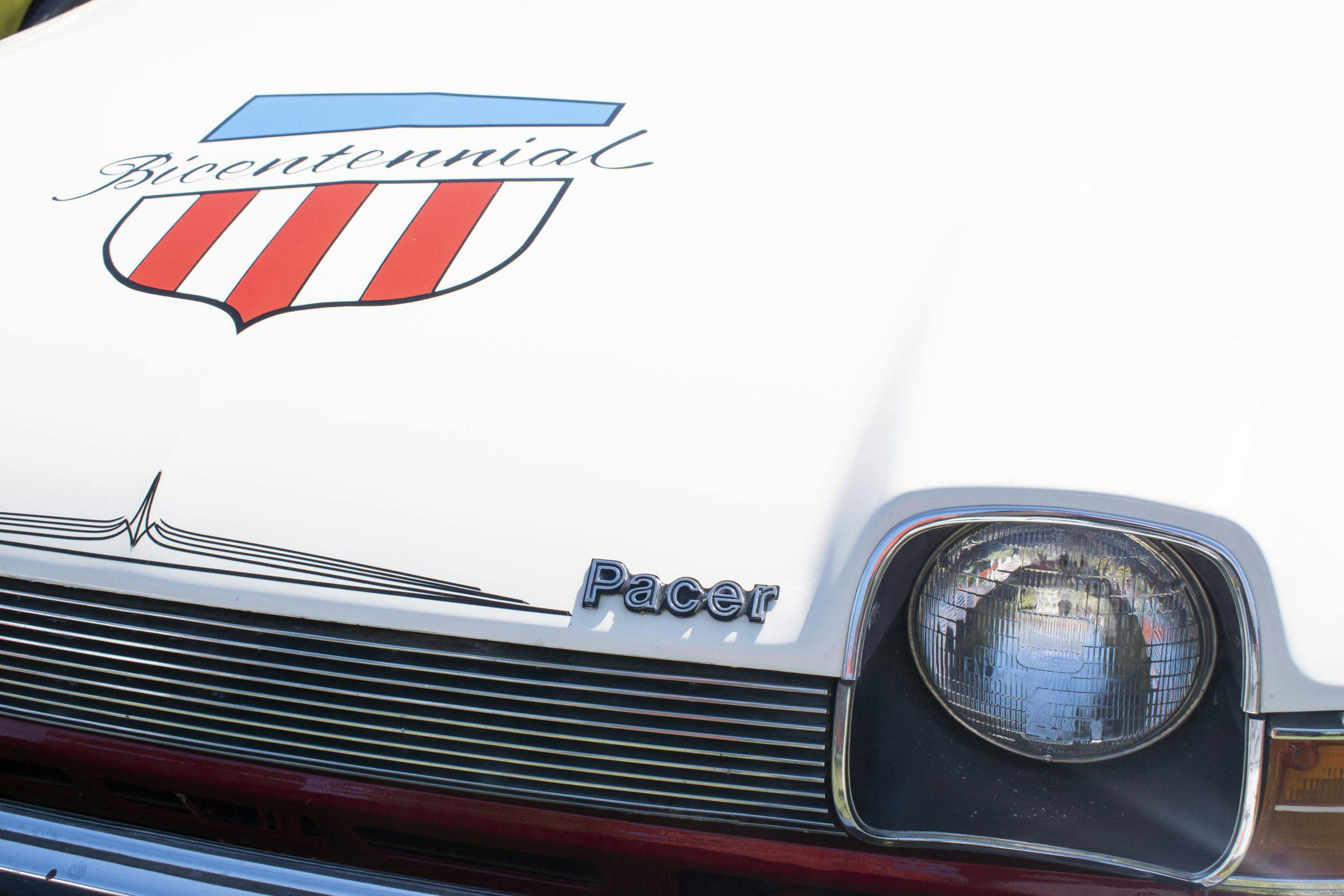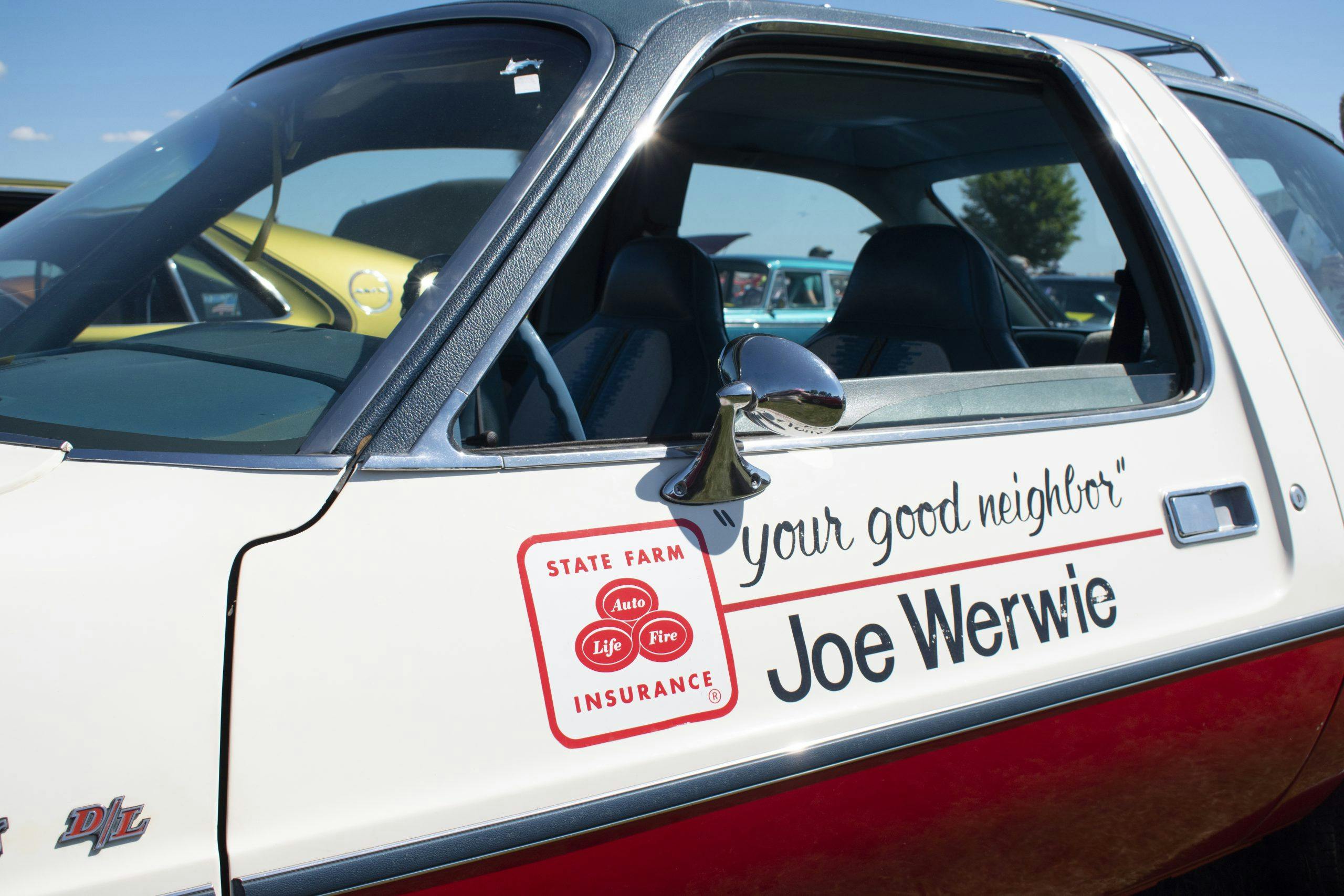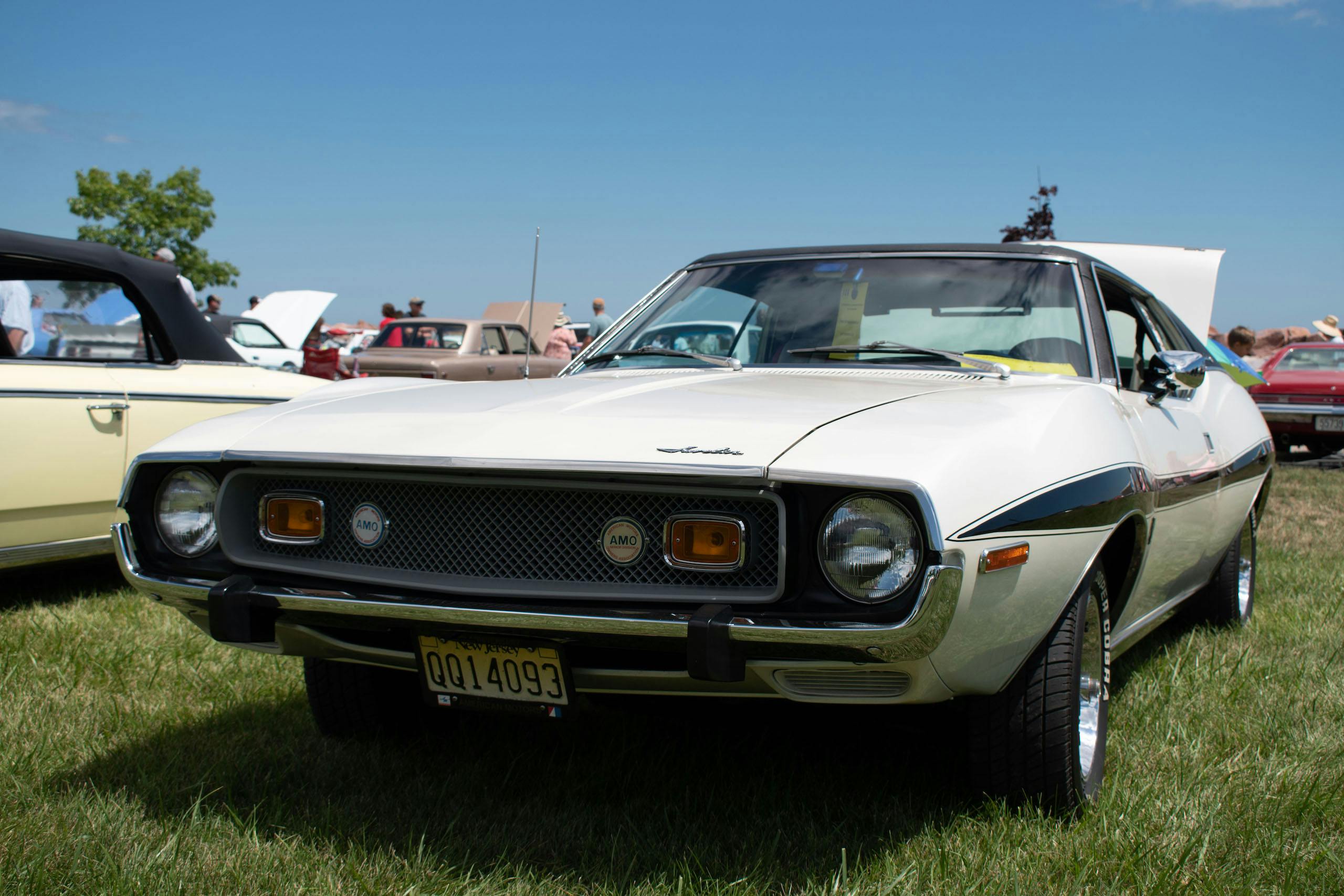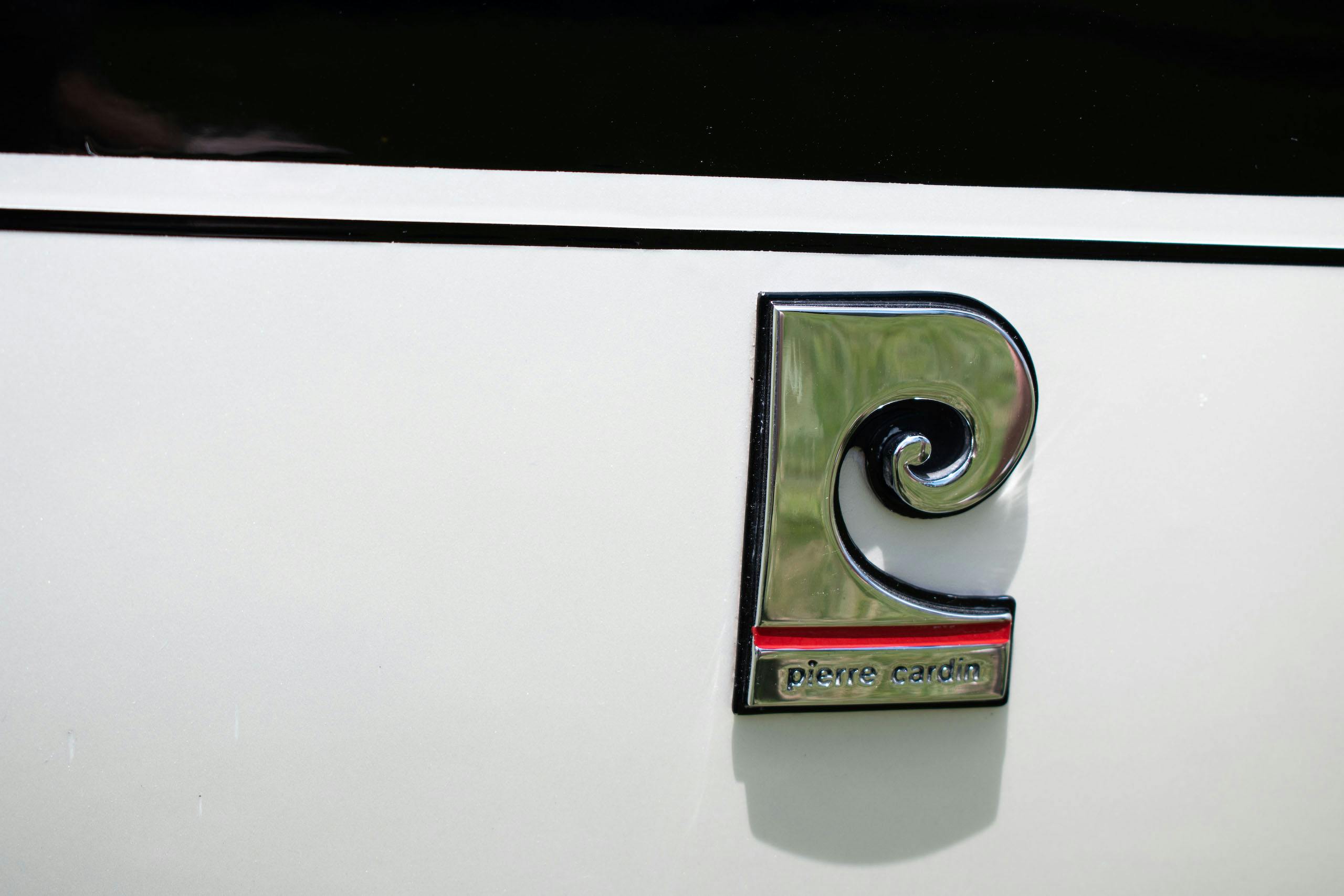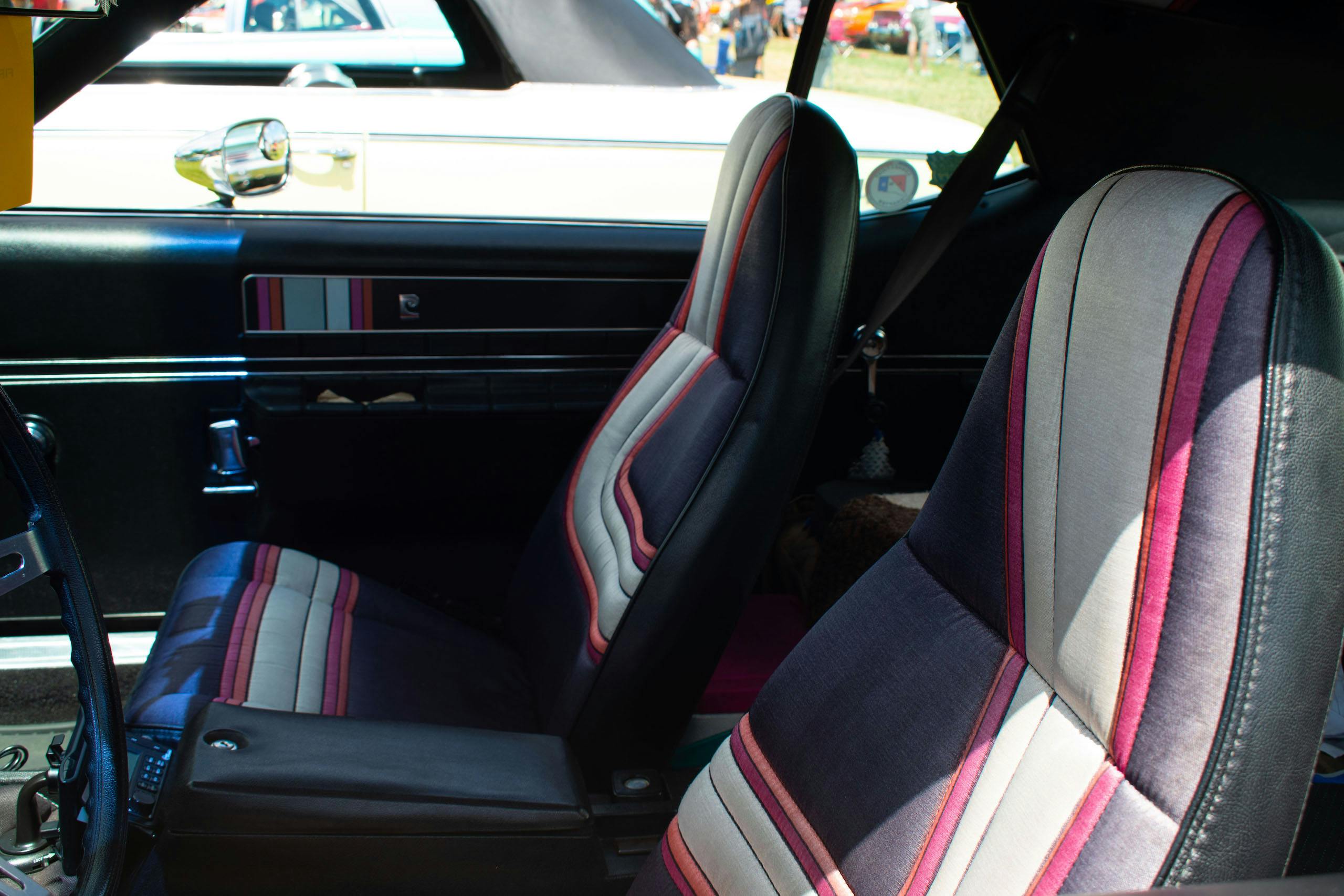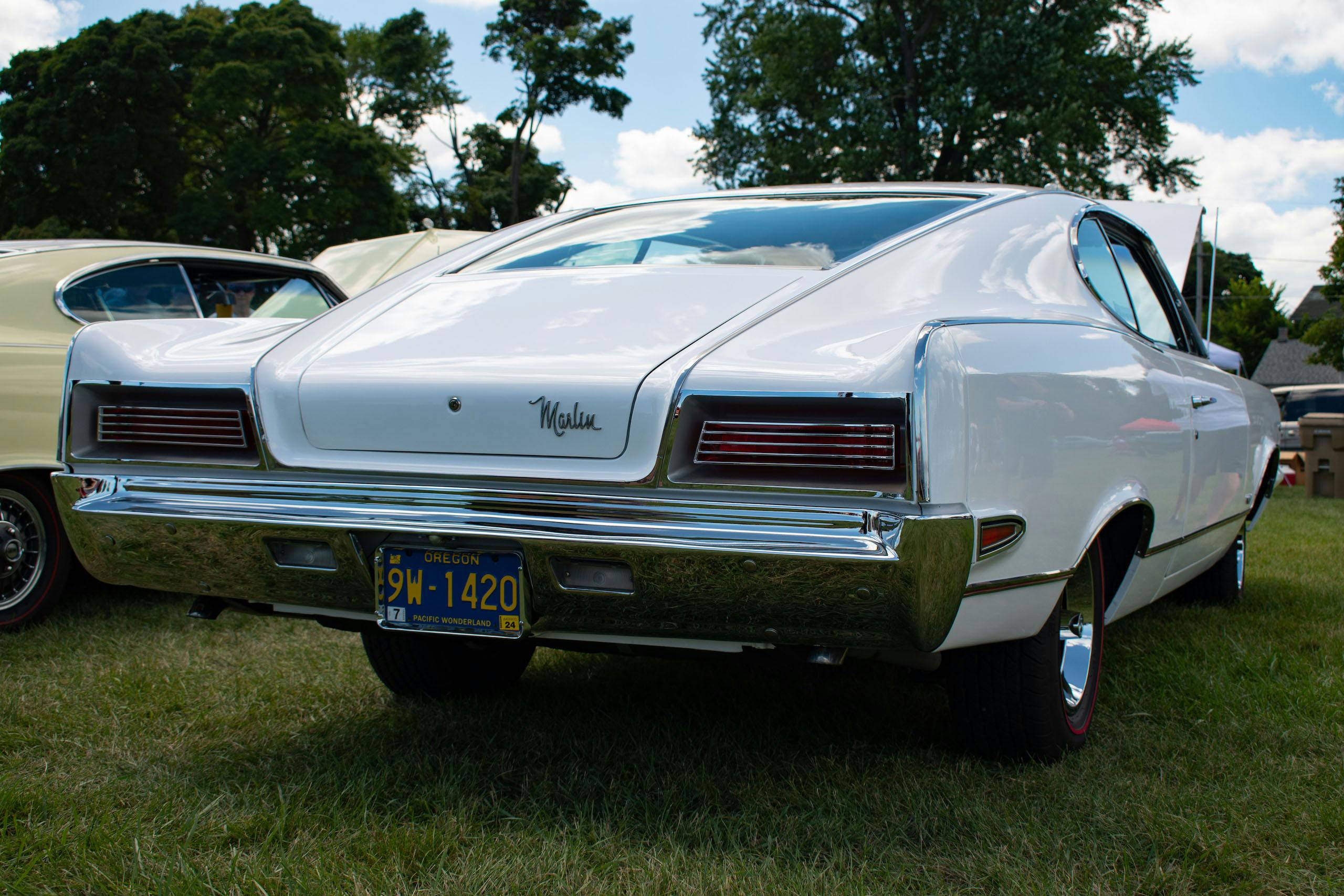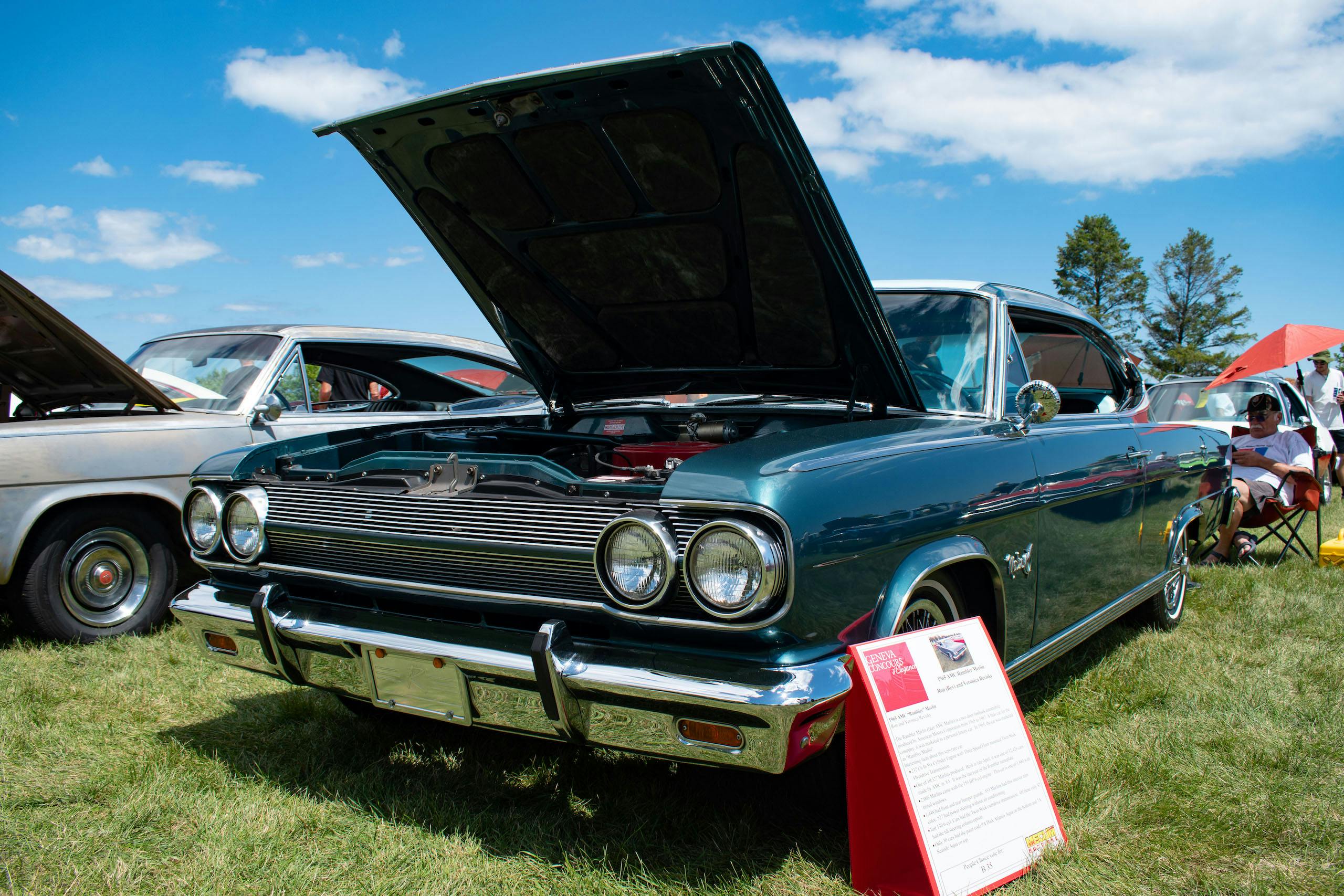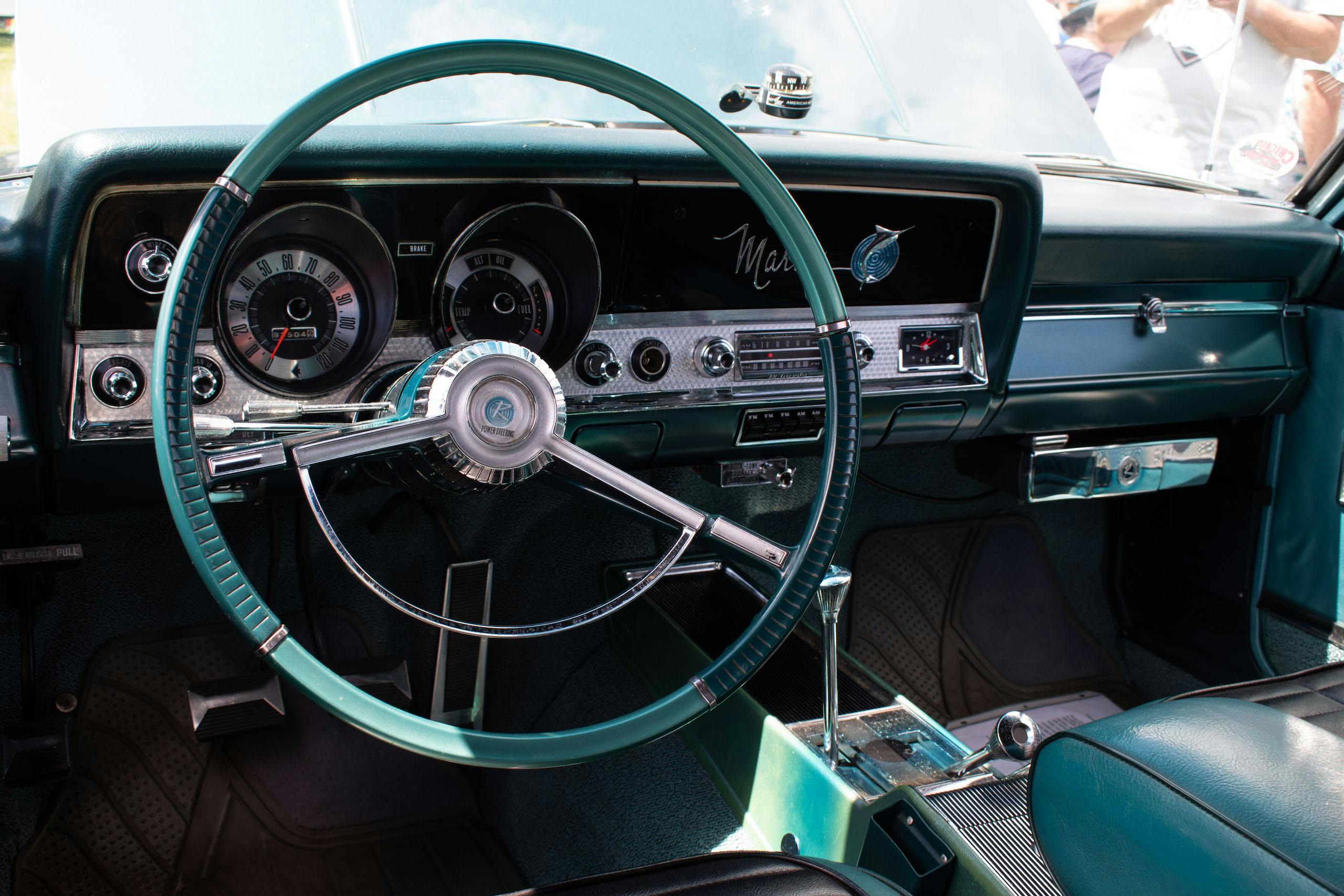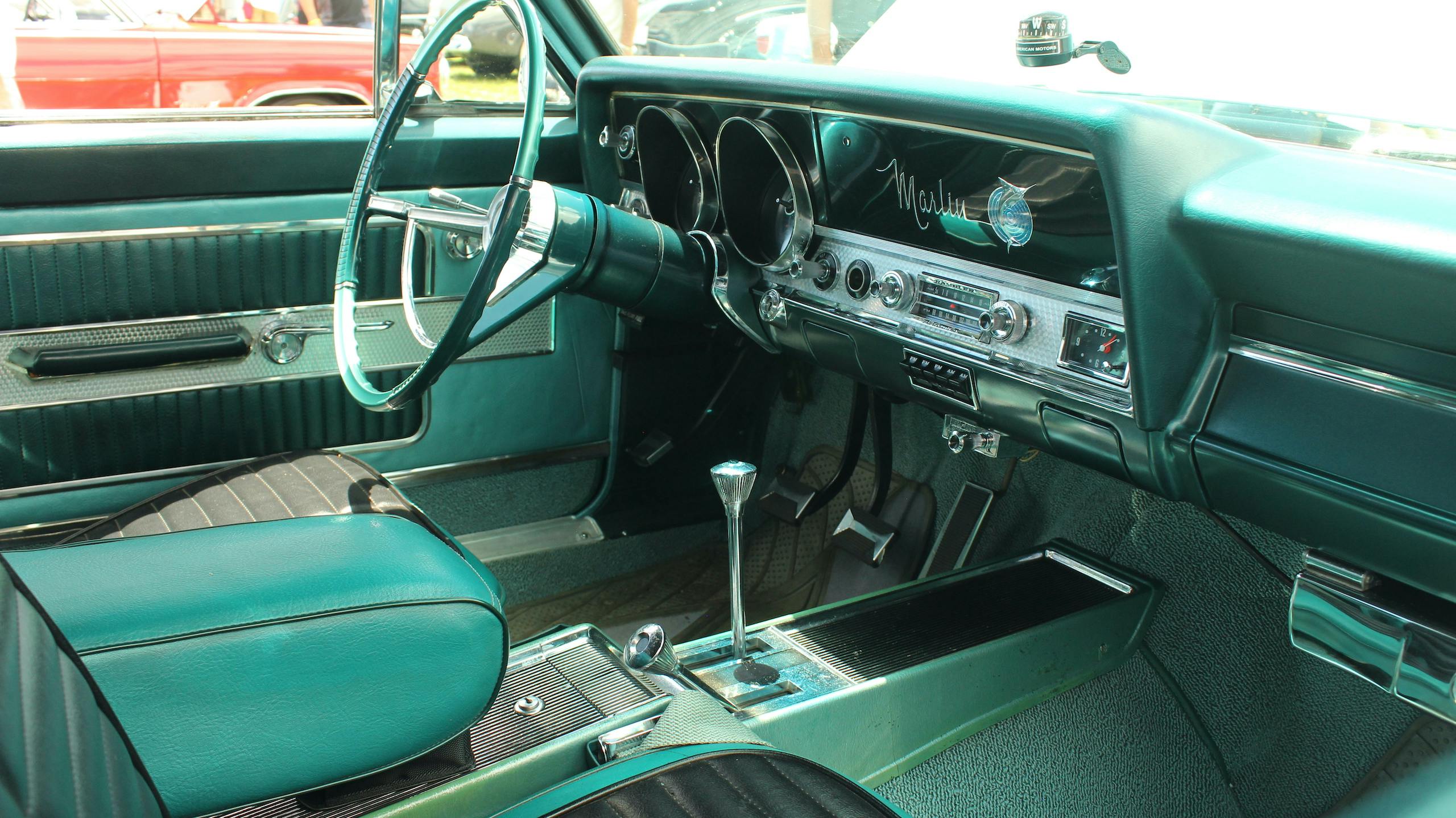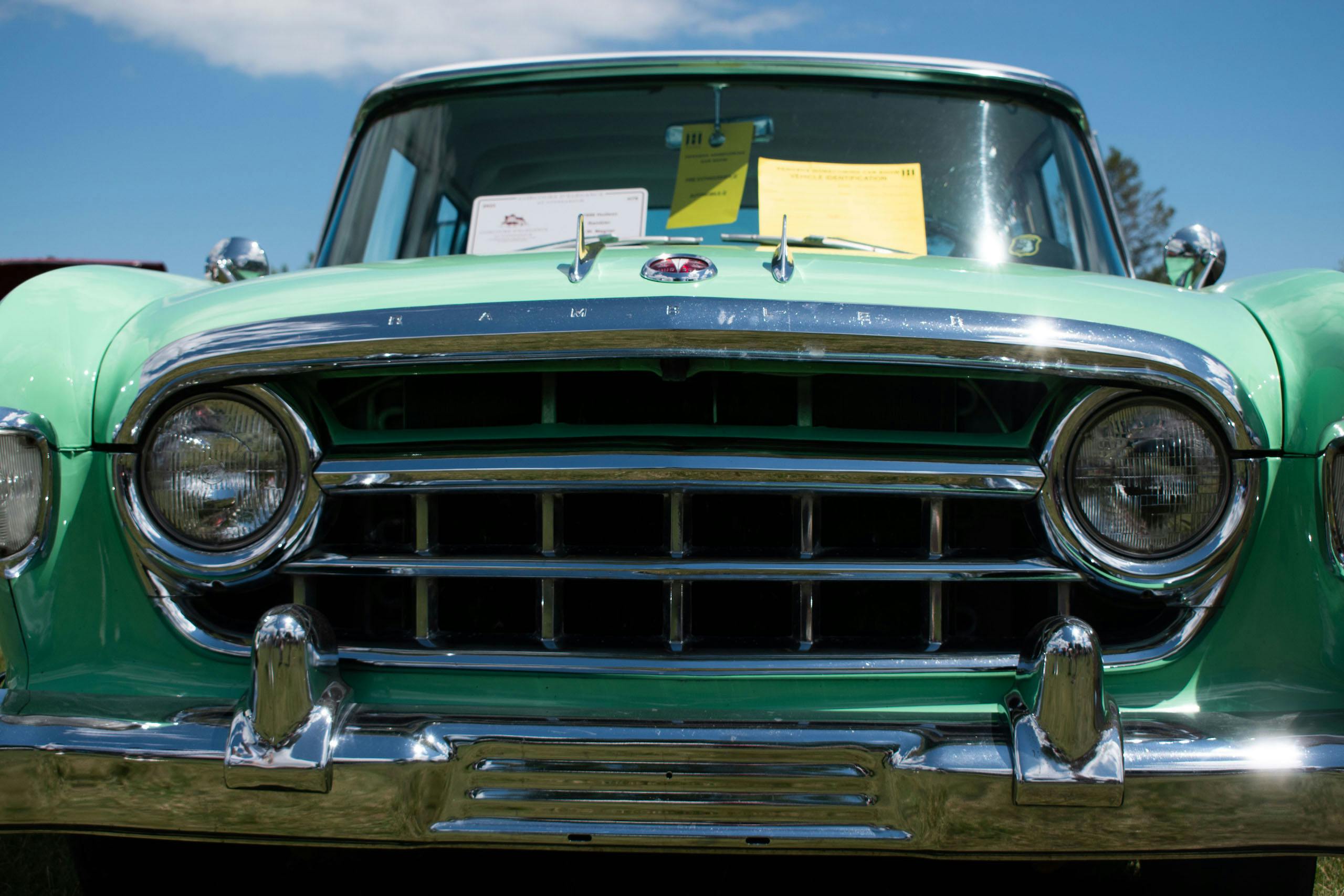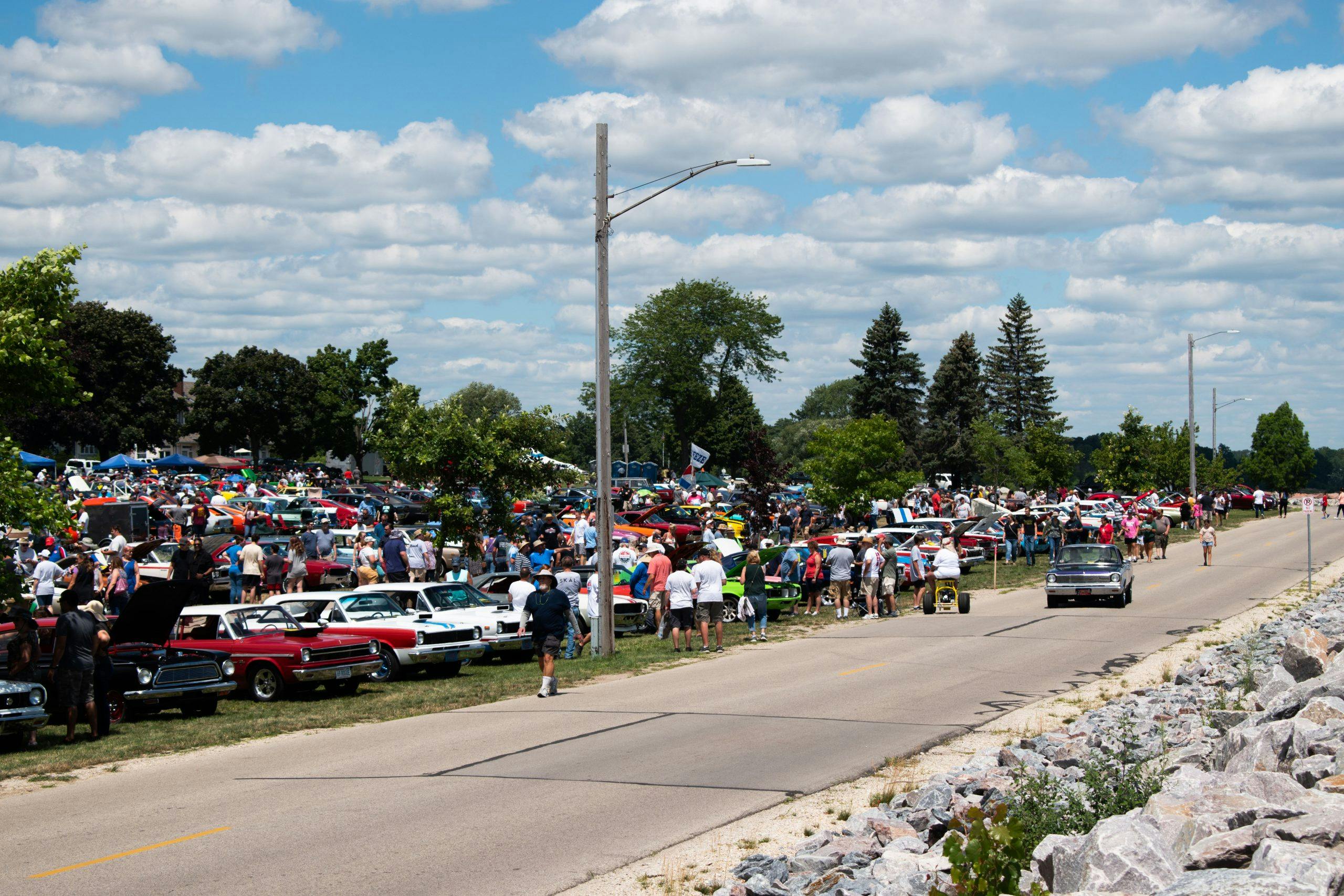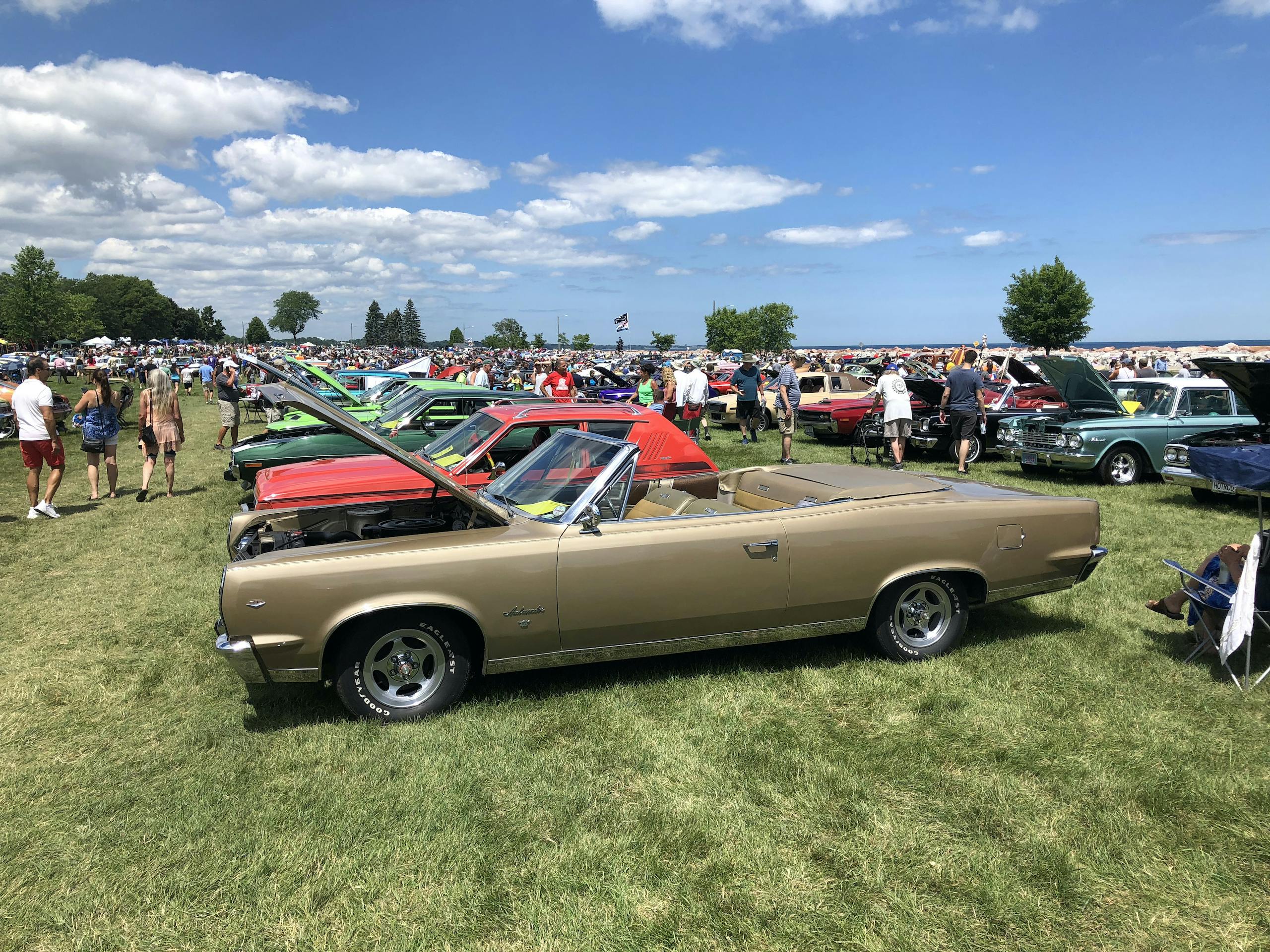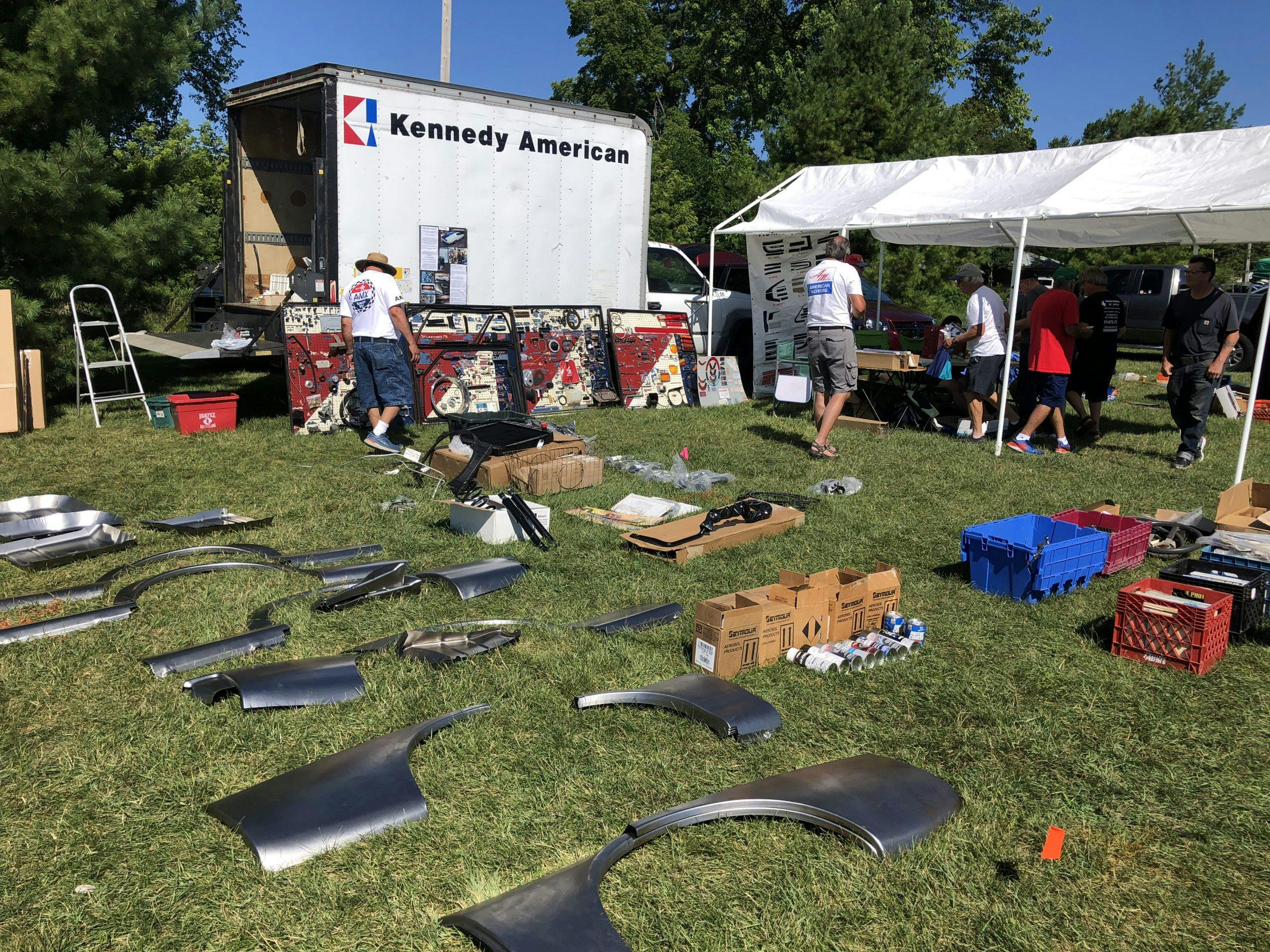7 of AMC’s rarest at 2022’s “Kenosha Homecoming”
An AMC collector once told me, “We have to stick together, because all our cars are rare!” While he makes a good point, and the American Motors community is well known for being tight-knit, even within AMC ownership there is a subtle hierarchy that ranges from rare to really, really rare.
However, “rare” can be difficult to define. Does it mean that only a few cars of a certain type were produced in-period, or that only a few remain today? AMC built far more Concords than AMXs, but I’d bet you a truckload of 401 engines that you’ll never find a car show where the former outnumber the latter. Most AMXs have survived; most Concords, sadly, have not.
Additionally, enthusiasts can really get into the weeds when deciding how esoteric they want to be when categorizing things. Anybody can claim their car is “1 of 1” if they divide by powertrain, paint color, interior color, seatbelt color, air conditioning, courtesy lights, et cetera. But even though your Javelin may be the only green example built on a Tuesday with air conditioning and without a radio, it isn’t necessarily a blue-chip collectible (though its certainly worth treasuring).
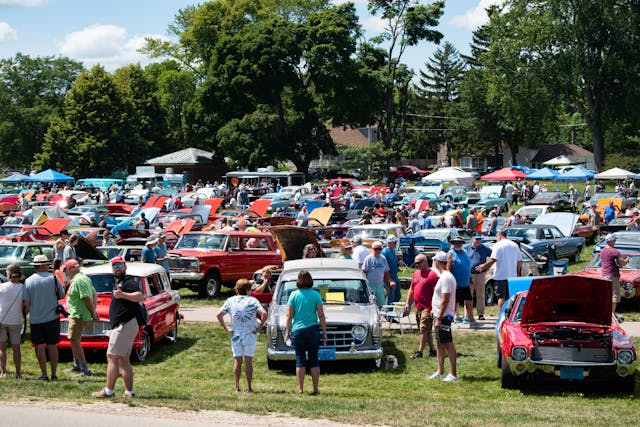
One of the best places to find the specialest of these special cars is the Kenosha Homecoming car show. Held once every three years in Kenosha, Wisconsin (the former home of American Motors Corporation’s largest assembly plant), it’s easily the world’s largest gathering of AMCs. After two years of COVID-19 delays—a five-year wait, in all, since the last gathering—participants and organizers alike were itching to get these cars out and show them off.
In search of interviews for my documentary series about the history of AMC, I traveled to Kenosha this July and found nearly 750 vehicles and 220 vendors converging in a park next to Lake Michigan. It was a celebration of all things American Motors. After surveying the field, I put together a compilation of some of the most uncommon cars in attendance.
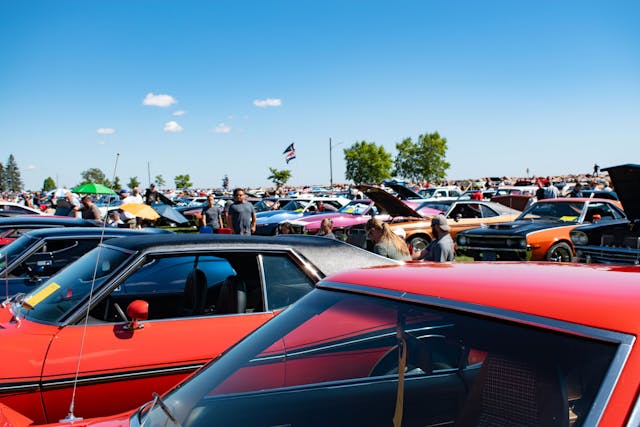
I won’t pretend this is the definitive list of The Rarest AMCs of All Time (especially since there was no AMX/3 present), but this event was a fun chance to highlight some of the coolest cars American Motors built, especially ones people may not have heard of. Interestingly, this list contains no Javelins, as even rare editions like the Pierre Cardin or Mark Donahue Javelins still managed to outsell all the vehicles below.
1970 AMC Rebel “The Machine”: 1 of 2326

The Rebel Machine is easily one of the most desirable and recognizable cars ever built by American Motors, and most AMC shows host at least one. With a 390-cubic-inch V-8 making 340 horsepower, the Machine holds the title of AMC’s most powerful production vehicle. With a working hood scoop and upgraded suspension, these cars offered legitimate performance for the time. Their red, white, and blue exteriors make them hard to confuse with anything else—although, to its credit, Kenosha attracted some alternate-livery Machines this weekend, seen below in shades of blue and bronze.

Collectors debate exactly how many Machines were made, but the generally accepted answer is 2326. Of those, 1340 featured the red, white, and blue package and the rest were painted in other sporty colors. While the non-RWB cars may look slightly more sedate next to their patriotic counterparts, their owners can claim an even more exclusive variant of an already rare vehicle.
1969 American Motors Hurst SC/Rambler: 1 of 1512
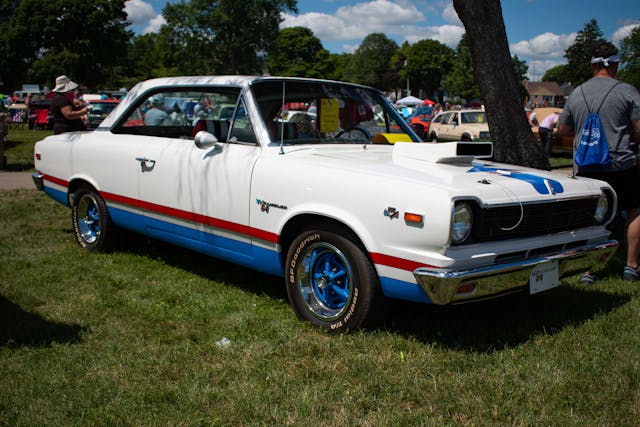
Affectionately called the “SCRambler” (no relation to Jeep), the 1969 Hurst SC/Rambler served as a predecessor of sorts to the Rebel Machine. Working with Hurst Performance, American Motors created a textbook-perfect muscle car by bolting its biggest available engine into its smallest available body, resulting in an inexpensive, no-frills car designed for maximum speed. The company had offered a performance-minded Rambler since the mid-’60s with the V-8-powered Rambler American Rogue, but the Hurst SC/Rambler was even more of an athlete thanks to a 390 V-8 making 315 hp. Coupled exclusively to a four-speed manual, the cars had suspension upgrades, front disc brakes, a working hood scoop, and other performance goodies.

Advertising claimed a quarter mile in 14.3 seconds straight from the factory, although many didn’t stay stock for long. All were painted red, white, and blue, with two different layouts. The louder A-scheme features bold red flanks; the more modest B-scheme offers low running stripes.
Despite AMC’s planned run of 500 cars, the public clamored so loudly for the stout little Ramblers that final production reached 1512 units. Of those, it’s believed that the majority were A-scheme cars, making B-scheme models much less common. Either way, the SC/Rambler served as a fitting send-off to the Rambler name, which would be replaced by the AMC Hornet the following year.
1957 Rambler Rebel: 1 of 1500
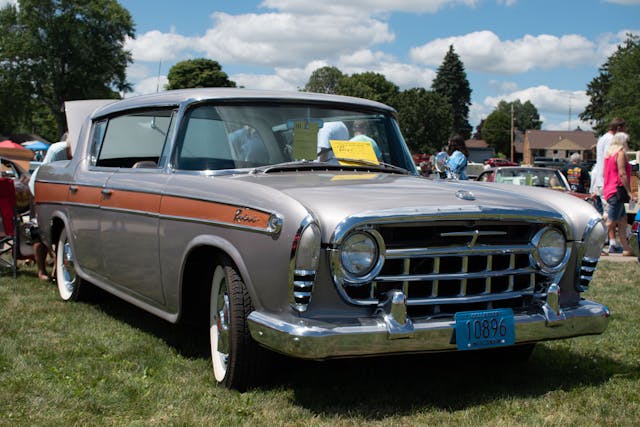
To avoid stoking argument over which vehicle can rightfully claim the title of the “first muscle car,” we’ll refer to the Rambler Rebel as “one of the first” and leave it at that. Regardless, after an engine-purchasing agreement with Studebaker-Packard turned sour, American Motors fast-tracked its own V-8 program, and the all-new motor debuted halfway through 1956 as a 250-cubic-inch design. For ’57, a larger, 327-cubic-inch variant followed, intended mostly for senior Nash and Hudson cars. In an out-of-character move for the conservative company, a few of those bigger engines found their way into the smaller Rambler bodies, creating the Rambler Rebel.

All were painted silver with copper side-spears, and each had a 327 V-8 making 255 hp. Sending power through either a three-speed manual with overdrive or a four-speed Hydramatic, these innocent sedans were devilishly fast. Magazine tests achieved 0-to-60mph in 7.5 seconds, making the Rambler Rebel the second-quickest American car sold in 1957 after the fuel-injected Corvette.
The Rebel almost got a fuel-injection system of its own (from Bendix), but last-minute engineering problems kept it from coming to market, and all the production Rebels ended up with four-barrel carburetors. The Rambler Rebel model returned for 1958–60 and again in ’66–67, but none of the reboots were quite as groundbreaking as those original 1500 built for ’57.
1971 AMC Hornet SC/360: 1 of 784
The AMC Hornet SC/360 followed in the footsteps of the Rebel and the SC/Rambler, with a similar strategy of “big motor, small car.” However, unlike its older brothers, the Hornet SC/360 didn’t come in red, white, and blue, and it didn’t come with AMC’s biggest engine.
Javelins, AMXs, Matadors and Ambassadors all offered a new 401-cubic-inch V-8, but the Hornet SC/360 tried to be slightly more pragmatic. Advertised as “a sensible alternative to the money-squeezing, insurance-strangling muscle cars of America,” the SC/360 tried to strike a balance between fast and frugal. Gas and insurance prices were on the rise, and AMC still had a lot of that old Rambler-era economy in its blood. Offering more customization than the Machine or Scrambler, the Hornet offered buyers a 360-cubic-inch V-8 with either a two- or four-barrel carb, making either 245 or 285 hp. Transmissions were a three-speed manual, three-speed auto, or four-speed manual (the last with the four-barrel only). Even the hood scoop had become an option.
With only 784 built, each was based on the two-door Hornet coupe. That rarity was on display at Kenosha, as only a handful made it to the show. And although it technically doesn’t count for this list, one imaginative owner even built their own Hornet SC/360 Sportabout station wagon, making it truly a 1-of-1 car.
1981–82 AMC Eagle/Concord Sundancer: 1 of 200(ish)
Not all rare AMCs are straight-line performance vehicles. You’d be hard-pressed to win a drag race in a Concord or an Eagle, but the ultra-rare “Sundancer” models certainly deserve a spot on this list. Built in Kenosha and shipped to Florida for conversion by the Griffith company, these are some of the oddest vehicles to ever wear the AMC badge.
When manufactures all but killed factory-built convertibles in the late 1970s, Jack Griffith had made a name for himself by chopping the tops of Toyota Celicas. His coachbuilt convertibles were popular enough to finance a second product, leading him to strike a deal with AMC. Since they shared essentially the same body, Griffith developed a convertible version of both the two-door bodies for AMC Concord and AMC Eagle.
Called the Sundancer, the unexpected collaboration resulted in some extra showroom traffic for AMC dealers but not a lot of sales, causing economic disaster for Griffith’s company. The production records didn’t survive, leading collectors to estimate that around 200 Sundancers were built between 1981 and 82. Two Eagle Sundancers made an appearance at Kenosha, but I didn’t see any Concord variants. All things considered, the targa-style roof does integrate nicely into the body, and with the Eagle’s pioneering 4WD system underneath, these off-road-ready coupes are pretty cool.
1971 Jeep Hurst Jeepster Commando: 1 of 103(?)
While technically not a Rambler or an AMC-branded product, this Jeep represents one of AMC’s earliest attempts to inject some pep into the brand, which had become part of the American Motors family after the company purchased it from Kaiser Industries in 1970. While AMC retooled for new models, its short-term solution was to bring its friends at Hurst into the picture.
With a similar red, white, and blue treatment as the SC/Rambler and the Rebel Machine, the Jeep Hurst Jeepster Commando looked like a wild performance SUV … except it didn’t have the grunt to match. Under the hood was a 225-cubic-inch, 160-hp V-6 manufactured by Jeep but originally developed by Buick. Other than wider tires, most of the Hurst Jeepster upgrades were purely cosmetic.
That said, this is a really cool-looking Jeep, and it certainly is rare. Despite plans for a 500-vehicle run, supposedly only 103 or so ever left the factory. It’s a shame it doesn’t have more power, but the Hurst Jeepster Commando’s rarity alone makes up for that. There was only one at Kenosha, and it was a gorgeous example of AMC-Jeep history.
1969 AMC Hurst S/S AMX: 1 of 52
You may have noticed that a lot of AMC’s rarest cars include the word “Hurst” in their names. Second only to the legendary AMX/3, the 1969 Hurst Super Stock AMX may be the rarest AMC performance car ever.
With only 52 examples ever built, these cars existed purely to prove to the NHRA that the factory-backed Super Stock AMXs racing professionally on drag strips were production models that the public could buy. Each of these homologation specials left the Kenosha plant as a fairly spartan AMX, devoid of creature comforts like radios, heaters, sound insulation, or other features. From there, the cars were modified and upgraded by Hurst Performance and sent to dealers.
AMC claimed the S/S AMXs only made 340 hp (officially tying it with the Rebel Machine as AMC’s most powerful engine), but most historians estimate the motors made well over 400 hp. In light of all the modifications, the cars carried high price tags and offered no factory warranty. Race cars often live dangerous lives, but at least 40 S/S AMXs are known to have survived. Of the few that made it to Kenosha, each had a unique personality and plenty of stories to tell.
1976 AMC Pacer State Farm Bicentennial Edition: 1 of 12
Ending on a Pacer might seem like a letdown (especially after the previous car), but this model’s backstory is too good to omit.
The United States was feeling especially patriotic in 1976, as the country was celebrating its 200th anniversary. Carmarkers jumped on the bandwagon with various “Spirit of ’76” special editions and trim packages, and AMC was no exception, offering a special stripe kit for Gremlins and Pacers. However, a group of Wisconsin-based State Farm Insurance agents took things a step further by special ordering one dozen AMC Pacers decked out in red and white paint with blue vinyl tops. Special bicentennial graphics were added, along with each agent’s name on the doors.
At the time, the Pacer was still considered a hot new car, and AMC was building and selling them as fast as it could. The State Farm Pacers were a hit with local communities, arriving just in time for the 4th of July. Eventually, most of the agents moved on to other cars but agent Joe Werwie kept driving his bicentennial Pacer for nearly 30 years before selling it in 2005. It’s become something of an icon over the decades, and it probably helped convince a couple of local AMC employees to change their insurance provider.
Honorable mentions
The aforementioned eight certainly weren’t the only cool cars in Kenosha. Honorable mentions for other rare vehicles include both four-speed- and Twin-Stick Marlins, a 1967 Ambassador convertible, 1956 Hudson Rambler, two Renault Alliance GTA convertibles, a 1917 Jeffrey pickup truck, and a 1978 Gremlin GT. Time would fail us to list the hundreds of other “more common” AMCs that would still be considered quite rare compared to the millions of contemporary Ford, GM, and Chrysler cars.
As I said before, this list is by no means exhaustive, and it’s also possible that with 740-plus cars at the show, there may have been some hidden gems I missed. Either way, the Kenosha History Center put on an excellent event, and I’m already looking forward to 2025.
Check out the Hagerty Media homepage so you don’t miss a single story, or better yet, bookmark it.

